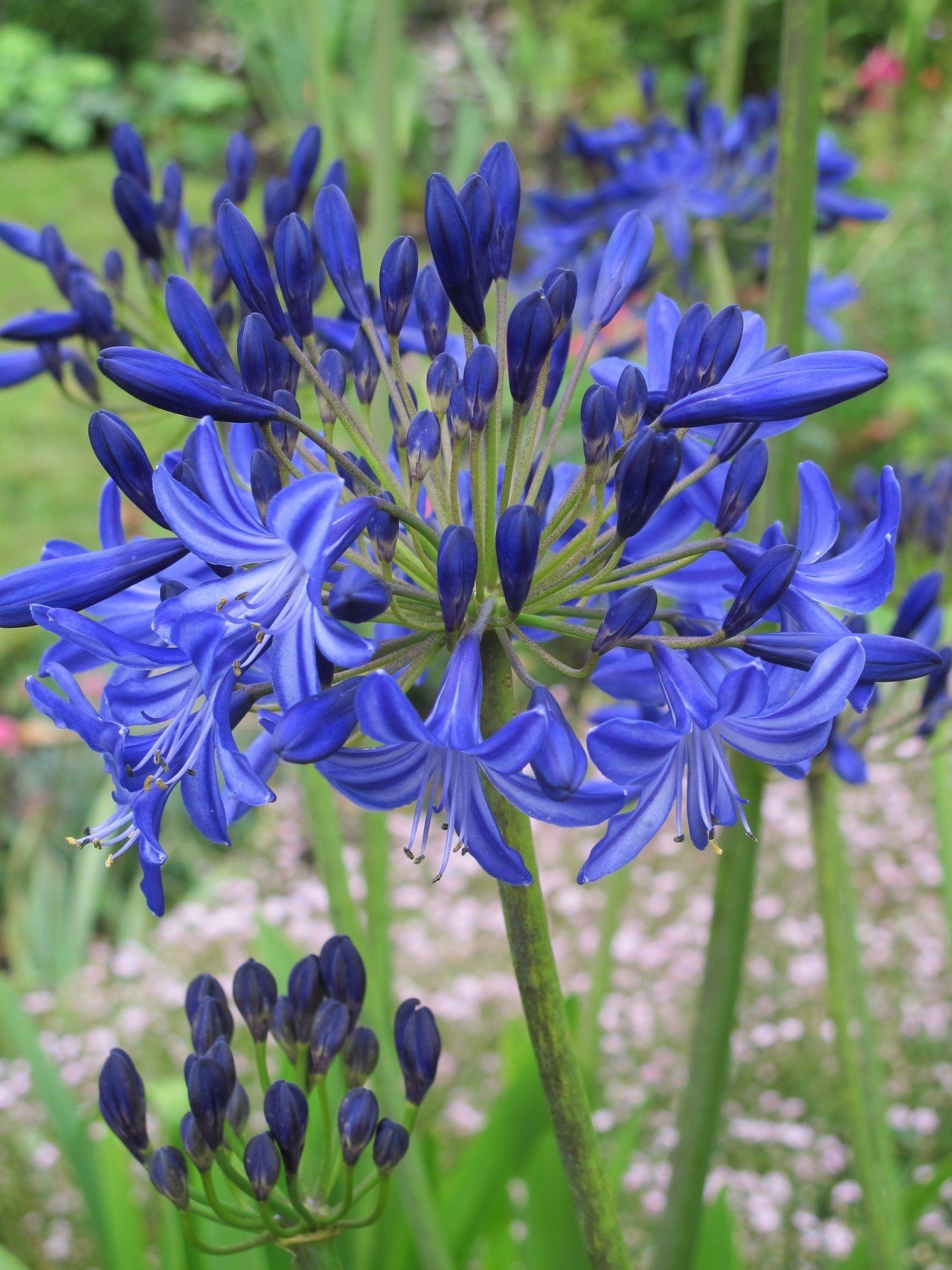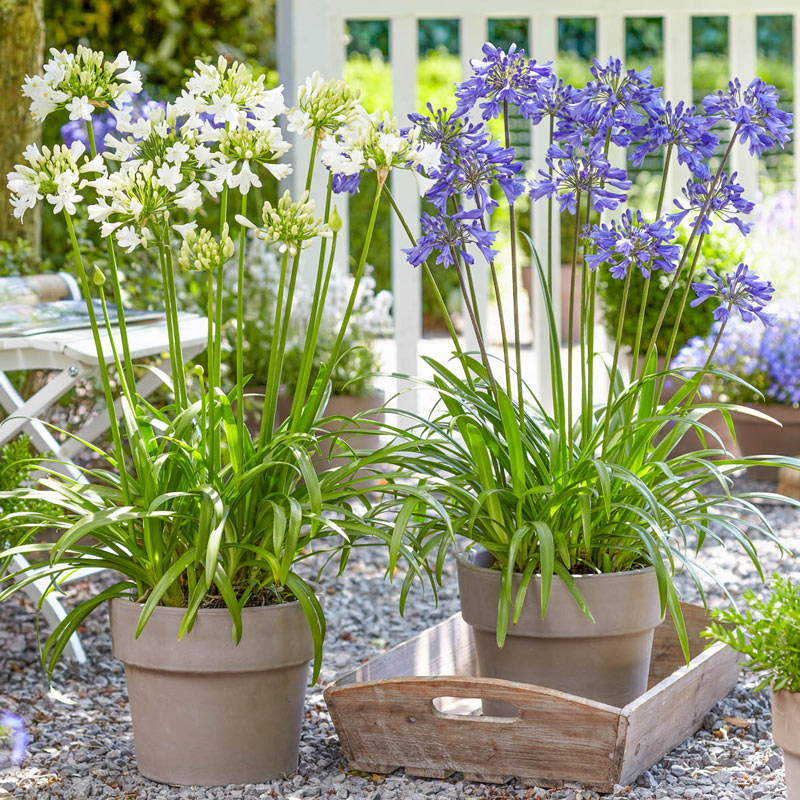Just how to Plant and Maintain Agapanthus in Your Yard
Just how to Plant and Maintain Agapanthus in Your Yard
Blog Article
Unleashing the Secret to Successful Agapanthus Farming: Advice for a Flourishing Garden
In the world of horticulture, cultivating agapanthus efficiently needs a strategic method that encompasses numerous aspects of plant care. By recognizing the nuances of agapanthus growing, one can create a setting where these plants thrive and flower perfectly.
Planting Agapanthus: Ideal Practices
When growing Agapanthus, proper soil preparation is vital for making certain effective growth and development of these stunning flowers. Agapanthus, commonly understood as Lily of the Nile or African lily, thrives in well-draining dirt with a slightly acidic to neutral pH level - Agapanthus. Before planting, it is vital to modify hefty clay dirts with raw material such as compost or peat moss to enhance drain and offer necessary nutrients for the plants
To grow Agapanthus, pick a location that receives full sunlight to partial shade, as this will certainly advertise healthy growth and abundant blooming. Dig an opening two times the diameter of the plant's origin ball and put the Agapanthus at the exact same depth it was previously expanding. Gently backfill the opening with dirt, weighing down securely to eliminate any type of air pockets around the roots.
Water the newly grown Agapanthus extensively and proceed to keep the soil evenly moist, specifically throughout the plant's active growing period. Agapanthus. Using a well balanced fertilizer once a month can even more sustain the plant's development and flowering. By following these ideal practices for planting Agapanthus, you can produce a magnificent screen of these captivating blossoms in your yard
Perfect Soil Conditions for Agapanthus
For ideal growth and blooming success of Agapanthus plants, ensuring the dirt conditions are optimal is essential. Agapanthus chooses dirt that is rich in nutrients, so including a balanced plant food during the expanding season can promote healthy growth and lively flowers.

Watering and Fertilizing Tips
To make certain healthy and balanced growth and vivid blossoms, correct watering and fertilizing methods are necessary for effective Agapanthus growing. Agapanthus plants benefit from normal watering, particularly during the growing period. It is advised to water deeply once a week, ensuring the soil is moist but not waterlogged. During hot weather or in pots, more frequent watering may be needed to avoid the dirt from drying totally.
When it involves feeding Agapanthus, a balanced plant food with equivalent parts nitrogen, phosphorus, and potassium can be applied in the spring to advertise healthy and balanced development and blooming. Slow-release fertilizers are suitable for supplying nutrients gradually over an extended period. Prevent over-fertilizing, as this can bring about extreme vegetation growth at the expenditure of blooms.
In addition, integrating raw material like garden compost into the soil can boost nutrient degrees and enhance soil framework, assisting in the overall health of the Agapanthus plants. By adhering to these watering and fertilizing pointers, gardeners can guarantee their Agapanthus plants flourish and generate sensational displays of blossoms.
Pruning and Deadheading Strategies
Appropriate trimming and deadheading techniques play a vital role in preserving the health and wellness and aesthetic appeals of Agapanthus plants, enhancing the necessary techniques of watering and fertilizing for successful cultivation. Trimming Agapanthus includes getting rid of invested blossom heads, yellowing or dead leaves, and total shaping of the plant to advertise better development. Deadheading, the process read this article of removing faded blossoms, not just boosts the plant's appearance however additionally motivates more flowering.
When deadheading Agapanthus, it is suggested to clip off the blossom stem at the base making use of sharp, clean shears. This procedure redirects the plant's energy from seed manufacturing back right into origin and vegetation development, promoting a healthier and much more robust plant. Regular deadheading can extend the flowering period of Agapanthus and avoid self-seeding, which can cause congestion.
In regards to pruning, Agapanthus normally take advantage of a light trim after flowering to clean up the plant and encourage fresh growth. Cutting down the spent flower stems and eliminating any kind of damaged or dead vegetation aids preserve the plant's vigor and total appearance. Nonetheless, it is vital to stay clear of cutting into the crown of the plant, as this can deteriorate its health and wellness.

Protecting Agapanthus From Vermins and Diseases
Applying effective bug and illness monitoring techniques is essential to safeguarding the wellness and vigor of Agapanthus plants in farming. Agapanthus are generally durable plants, however they can still succumb different pests and conditions otherwise appropriately cared for. One typical insect that influences Agapanthus is the Agapanthus borer, a caterpillar that passages into the plant, triggering damage to the fallen leaves and blossoms. To avoid problems, routine examination of the plants is necessary. If borers are discovered, they can be by hand eliminated, or insecticidal soap can be made use of as a control step.
In addition to bugs, Agapanthus are susceptible to diseases such as origin rot and fungal fallen leave areas. These concerns can typically be prevented by making sure correct drain and avoiding overwatering. If signs of disease show up, influenced components of the plant need to why not check here be promptly gotten rid of to stop more spread. Fungicides may likewise be utilized as a treatment procedure, complying with the maker's directions carefully. By remaining watchful and dealing with pest and disease concerns immediately, garden enthusiasts can aid their Agapanthus flourish and grow.

Final Thought
To conclude, successful growing of agapanthus needs correct growing techniques, suitable dirt conditions, sufficient watering and fertilizing, normal pruning and deadheading, and protection from conditions and insects. By complying with these suggestions and methods, gardeners can make certain a prospering yard loaded with stunning agapanthus blooms. Agapanthus. Keep in mind to preserve constant treatment and focus find this to information to advertise the health and longevity of these spectacular plants
When planting Agapanthus, appropriate dirt preparation is important for making sure successful development and advancement of these beautiful flowers.Water the recently planted Agapanthus extensively and proceed to maintain the dirt evenly damp, especially during the plant's energetic growing season.For optimum development and blooming success of Agapanthus plants, making certain the dirt conditions are ideal is important. When growing or hair transplanting Agapanthus, make sure the dirt is well-prepared to provide the needed foundation for the plants to develop themselves successfully. One typical bug that affects Agapanthus is the Agapanthus borer, a caterpillar that passages into the plant, causing damage to the blossoms and leaves.
Report this page